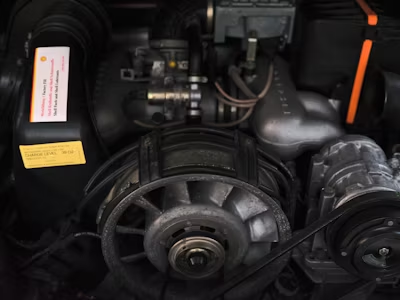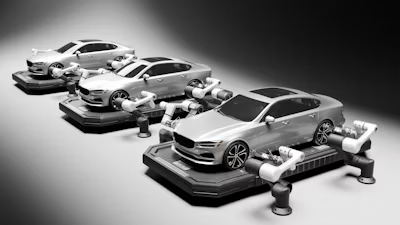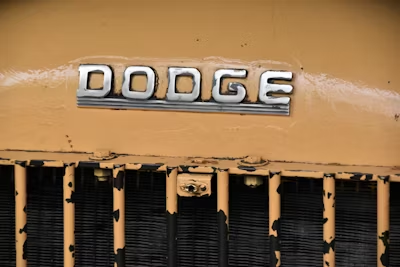Buying a used car can be a smart financial decision, but it also comes with potential risks—especially when it comes to engine trouble. The engine is the heart of any vehicle, and problems with it can lead to costly repairs or even complete engine failure. That’s why it’s crucial to recognize the warning signs of engine trouble before making a purchase. If you’re shopping at used car dealerships in Pompano Beach, FL, being informed about engine health can help you avoid unexpected issues down the road. In this guide, we’ll explore the key indicators of engine problems that you should check or discuss with the dealer before buying a used vehicle.
Check for Unusual Engine Noises
One of the first and most obvious signs of engine trouble is strange noises coming from the engine bay. Clicking, knocking, tapping, or grinding sounds could indicate internal damage or component wear. Knocking, for instance, may be a sign of worn-out bearings or insufficient oil lubrication, which can lead to serious damage if not addressed. Always ask to start the car cold and listen carefully—some problems are only apparent during cold starts.
Look for Excessive Exhaust Smoke
The color and volume of exhaust smoke can reveal a lot about a car’s engine condition. Blue smoke usually signals that the engine is burning oil, often due to worn piston rings or valve seals. White smoke might indicate a blown head gasket or coolant leak, while black smoke suggests the engine is burning too much fuel. Any of these issues can result in costly repairs and should be discussed with the dealer immediately.
Inspect for Oil Leaks or Low Oil Levels
Pop the hood and take a good look at the engine bay. Oil leaks are a red flag, especially if you notice oil pooling underneath the car or accumulating on engine parts. Even if no active leak is visible, check the oil level and condition using the dipstick. Dirty, sludgy oil or a very low oil level could indicate poor maintenance, which may have caused internal engine damage over time.
Check the Engine Light and Other Warning Indicators
The check engine light is a clear sign that something is wrong—but it’s not the only one. Other dashboard lights like the oil pressure warning, temperature warning, or battery light can also point to potential engine problems. Before committing to a purchase, ask the dealer to provide a diagnostic scan if any lights are on. This will give you a clearer picture of what might be wrong and help you avoid costly surprises.
Assess Engine Performance During a Test Drive
A test drive is essential when evaluating a used car. Pay close attention to how the engine performs under various conditions. Does the car hesitate or stall when accelerating? Is there a loss of power when going uphill? These issues could indicate fuel delivery problems, ignition trouble, or internal engine wear. Also, watch for excessive vibrations, engine surging, or jerky movements—all are signs that the engine may not be running smoothly.
Feel for Rough Idling or Stalling
A healthy engine should idle smoothly, without shuddering or fluctuating RPMs. If the vehicle feels like it’s about to stall or you notice irregular engine speed at idle, it may be dealing with a faulty sensor, vacuum leak, or fuel system problem. Ask the dealer if the vehicle has recently had a tune-up and whether these issues have been addressed.
Smell for Burning Odors or Coolant Leaks
Your nose can also help detect engine issues. A burnt oil smell might indicate an oil leak dripping onto hot engine components. A sweet, syrupy odor often points to a coolant leak. Either smell coming from the engine bay is cause for concern and should be checked before moving forward. If the dealer has a mechanic on site, ask them to verify the source of any unusual odors.
Examine the Engine Bay for Cleanliness and Condition
While a clean engine bay isn’t a guarantee of a good engine, excessive grime, corrosion, or evidence of hasty cleaning can be telling. Look at hoses and belts for cracks or wear, check the radiator and coolant reservoir for leaks, and inspect wiring for signs of damage. An overly clean engine might suggest the seller is trying to hide leaks or other problems, while a dirty one could indicate neglect.
Review Maintenance Records and Service History
A used car with complete maintenance records is generally a safer bet. Ask the dealer for documentation showing regular oil changes, timing belt replacements, and major repairs. If the car has skipped key services or the history is missing, it’s harder to assess how well the engine has been maintained. Well-documented maintenance history is one of the best indicators of long-term engine reliability.
Check for Engine Mount Wear or Damage
Engine mounts hold the engine in place and help absorb vibration. If a mount is broken or worn, it can cause the engine to shift slightly while driving, leading to noise, vibration, and even damage to other components. During the test drive, note if you feel excessive engine movement when accelerating or braking. This may be a sign that the mounts need inspection or replacement.
Ask About Cold Start Behavior
Ask the dealer to start the car for the first time in the morning or after it has been sitting for several hours. Cold starts can reveal hidden engine problems, such as hard starting, misfiring, or knocking. Some issues may only appear when the engine hasn’t yet reached operating temperature, so this step can be critical in uncovering problems the dealer may not have mentioned.
Pay Attention to Fuel Economy and Engine Codes
Poor fuel economy can be another subtle hint that something isn’t right. A car that uses more fuel than expected might have issues with fuel injectors, spark plugs, or oxygen sensors. Ask the dealer if any recent fuel economy issues have been noted or if the vehicle recently had its OBD (On-Board Diagnostics) system scanned. If you have access to an OBD-II scanner, you can even check for trouble codes yourself, giving you a clearer picture of the engine’s condition.
Look at the Cooling System
The engine’s cooling system plays a vital role in keeping it running efficiently. Check the radiator for signs of corrosion or leaks, and make sure the coolant reservoir has clean fluid at the proper level. An overheating engine can suffer serious damage very quickly. Ask the dealer if the thermostat, radiator, or water pump has been serviced recently, especially if the vehicle has high mileage.
Be Wary of Fresh Repairs with No Documentation
Some sellers may perform quick repairs to mask deeper issues. If you see shiny new parts like hoses, sensors, or gaskets but the dealer can’t provide documentation or an explanation, that’s a red flag. These last-minute fixes could be temporary solutions to ongoing engine problems. Ask specific questions and insist on paperwork to back up any recent repairs.
Conclusion
Purchasing a used car can be an exciting experience, but it requires a careful eye—especially when it comes to evaluating the engine. Being aware of the common signs of engine trouble can help you avoid buying a vehicle that may soon require expensive repairs. When visiting used car dealerships in Pompano Beach, FL, don’t hesitate to ask questions, request a thorough inspection, and take your time during the test drive. A well-informed buyer is far more likely to drive away with a reliable car that offers peace of mind for years to come.
Let me know if you’d like a shorter version, a specific tone (professional, friendly, etc.), or if you’d like this adapted into a PDF or web-optimized format.











